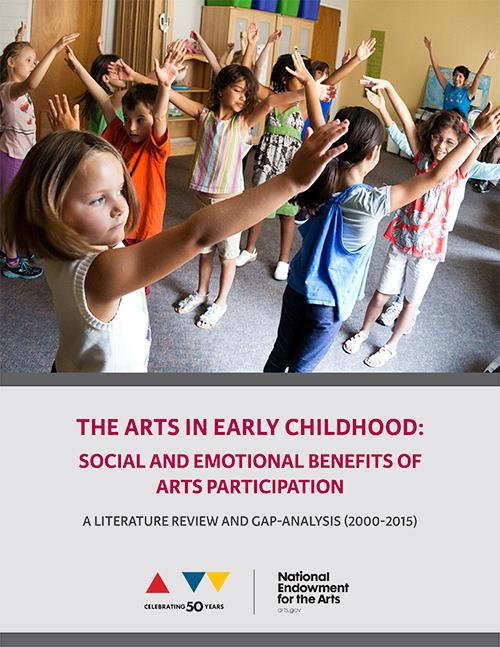Looking at the Social and Emotional Benefits of the Arts

Many would argue that the fundamental skills we develop and the experiences we have shape the way we approach the world later in life. In thinking about the arts and early childhood, I am often reminded of the time I volunteered for a community service center back when I was in college, which provided programs and assistance for active-duty military personnel and their families. During that time, I helped lead activities in the arts for a playgroup for parents and toddlers: the highlight of my day was seeing children experience pure joy when finger painting.
As a developmental psychologist who also happens to have a BFA in studio arts, the NEA’s Office of Research & Analysis is the perfect place for me to be. On a daily basis, I get to tickle my deep-rooted curiosity in understanding the value and the impact of the arts for human development. How cool is that?
I’m particularly interested to research how the arts are related to child development. In partnership with the NEA’s Interagency Task Force on the Arts and Human Development, we just released a new report, The Arts in Early Childhood: Social and Emotional Benefits of Arts Participation. This report reviews empirical research published since 2000 on arts participation and early childhood social-emotional development, which includes such behaviors like helping, sharing, and caring.
But how did the literature review on arts and early childhood social-emotional development come to fruition? Conducting a literature review on arts-related research on infants and toddlers should be pretty simple, right? Just plug in some arts-related terms and some child-related terms into a journal database and ta-da, you get a listing of research papers that focus on the arts.
It actually wasn’t that easy. Like any literature review on arts-related research, this report was quite a challenge to accomplish. In our initial search, we added as many keywords on the arts and childhood as we could think of; we got more than 18,000 articles! A couple of patterns that emerged from that initial search helped us fine-tune the search parameters. For example, if you put in search terms like “drama” or “art,” you’ll get some articles that are actually about the arts, but you also get articles that are not relevant but they happen to include words like “DRAMAtically” or “pARTicipants” or “antiretroviral therapy” (ART for short) in the text. Our reference librarian colleagues at the National Library of Education and the National Institute of Health’ Library of Medicine helped us narrow down our search results to a couple thousand articles, which we then further pared down using additional information gleaned from the full-text articles themselves (see the methods section in the report for more detail).
From that exercise, the report before you now was born. And the evidence suggests that the arts are a great thing for children’s social-emotional development! For example, in one study, researchers used data from the nationally representative Early Childhood Longitudinal Study-Birth Cohort to examine how family routines, like singing songs and playing with blocks, was associated with school readiness and social-emotional skills (Muniz, Silver, & Stein, 2014). They found that in general at least two out of three parents reported regular engagement with their young children in these activities, and that regular family engagement in the arts were positively related to social-emotional development. Further, the more regular routines families partook in, the better it was for children’s social-emotional development. Other studies are included in the NEA report, along with a gap analysis and priority research questions that stemmed from the literature review.
Coming full circle, it has been more than ten years since I provided arts programming for the toddlers in that parent-child playgroup, and I still have some of the artwork that the kids created. These paintings warm my heart every time I look at them. And I like to say that one of the many reasons I am where I am today is because of those past experiences with the arts. The arts really do shape how we approach the world and where we go in life. I hope that those kids are still making art now that they are teenagers.




